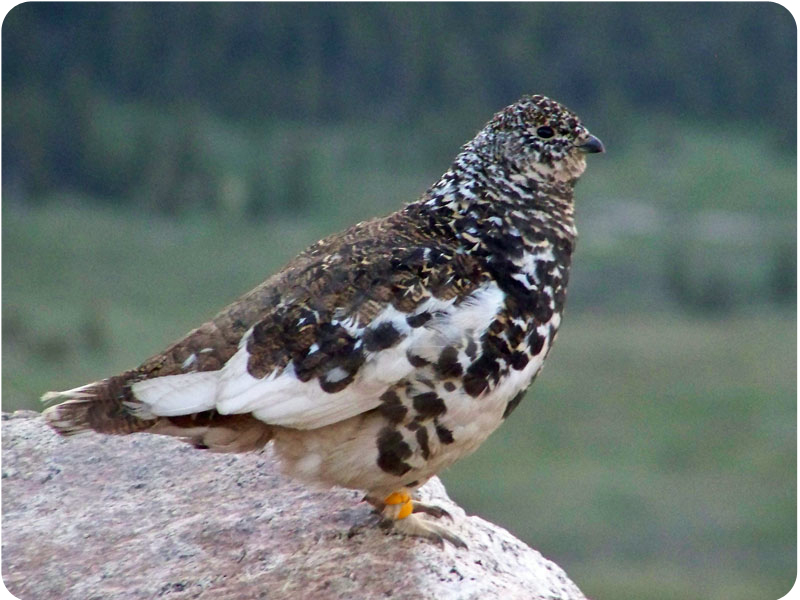Rare look at Paleoindian burial, housing, and nutrition
 Thursday, February 24, 2011 at 09:35PM
Thursday, February 24, 2011 at 09:35PM  White-tailed Ptarmigan. Image: Footwarrior11,500 years ago in the Tanana lowlands of central Alaska, a three-year-old child died. The cause of death is not known. According to Natasha Pinol, writing for EurekaAlert, “the remains showed no signs of injury or illness, though that isn't surprising, since most health problems don't leave traces in bones.” The child, a member of a Paleoindian family or clan that was “among the first to colonize the Americas”, lived in a house.
White-tailed Ptarmigan. Image: Footwarrior11,500 years ago in the Tanana lowlands of central Alaska, a three-year-old child died. The cause of death is not known. According to Natasha Pinol, writing for EurekaAlert, “the remains showed no signs of injury or illness, though that isn't surprising, since most health problems don't leave traces in bones.” The child, a member of a Paleoindian family or clan that was “among the first to colonize the Americas”, lived in a house.
Colored stains in the sediment suggest that poles may have been used to support the walls or roof, though it's not clear what the latter would have been made of. The entire house has not yet been fully excavated, so its total size is still unknown. (Pinol)
After cremation, the child was buried “in a large pit in the center of the home.” Archeologist Ben Potter of the University of Alaska Fairbanks, one of the discoverers, notes:
All the evidence indicates that they went through some effort. The burial was within the house. If you think of the house as the center of many residential activities: cooking, eating, sleeping, and the fact that they abandoned the house soon afterward the cremation, this is pretty compelling evidence of the careful treatment of the child.
Pinol writes:
In contrast to the temporary hunting camps and other specialized work sites that have produced much of the evidence of North America's early habitation, the newly discovered house appears to have been a seasonal home, used during the summer. Its inhabitants, who included women and children, foraged for fish, birds and small mammals nearby, according to Potter's team.
Evidence of a Paleolithic diet was discovered in sediment at the bottom of the 18-inch deep pit, specifically bone of “salmon, ground squirrels, ptarmigan and other small animals.”
The discovery provides a rare look at domestic life of the Paleoindians that crossed, or, more likely, descended from those that crossed the Beringian Land Bridge to Alaska. The report of the find will be published 25 February issue of Science, the journal of the American Association for the Advancement of Science.
Source: Child's cremation site reveals domestic life in Paleoindian Alaska at EurekaAlert
 Archeology,
Archeology,  Paleoindian,
Paleoindian,  Paleolithic in
Paleolithic in  Anthropology
Anthropology 

Reader Comments